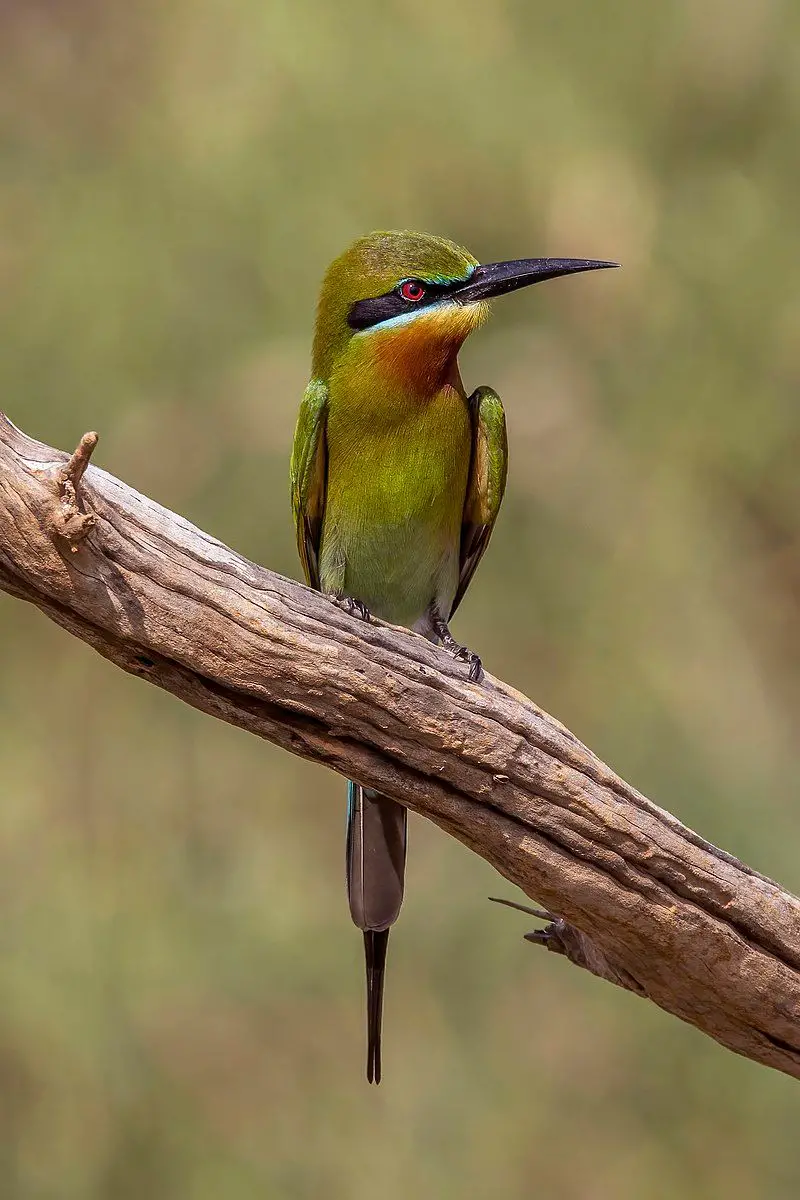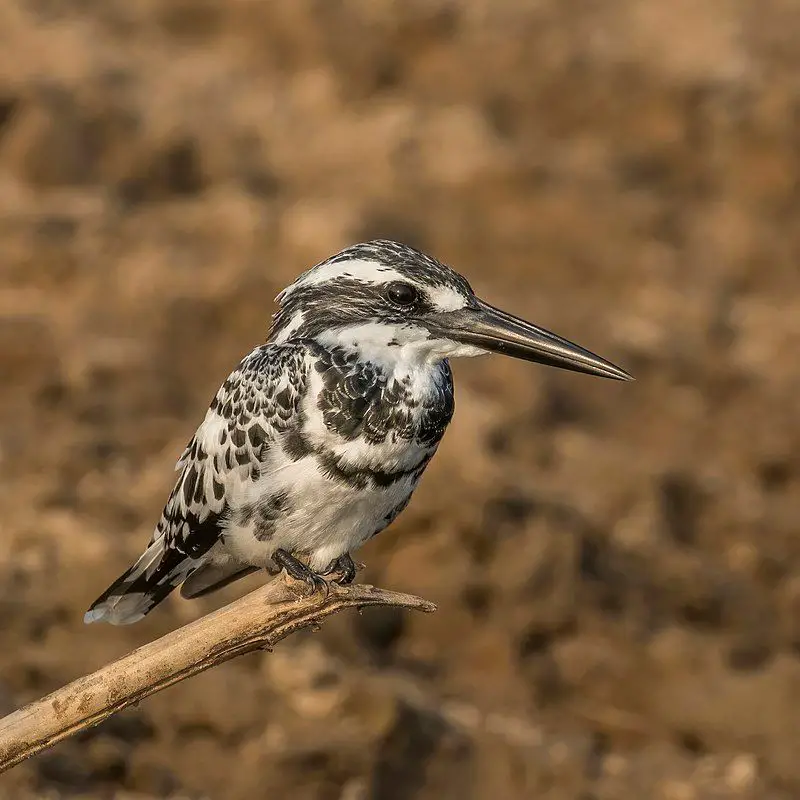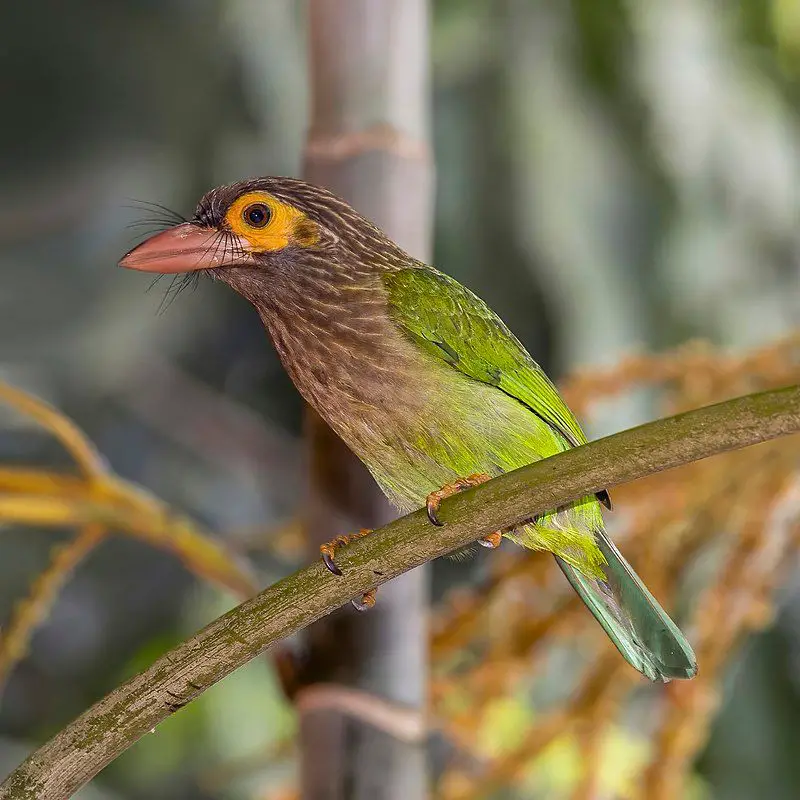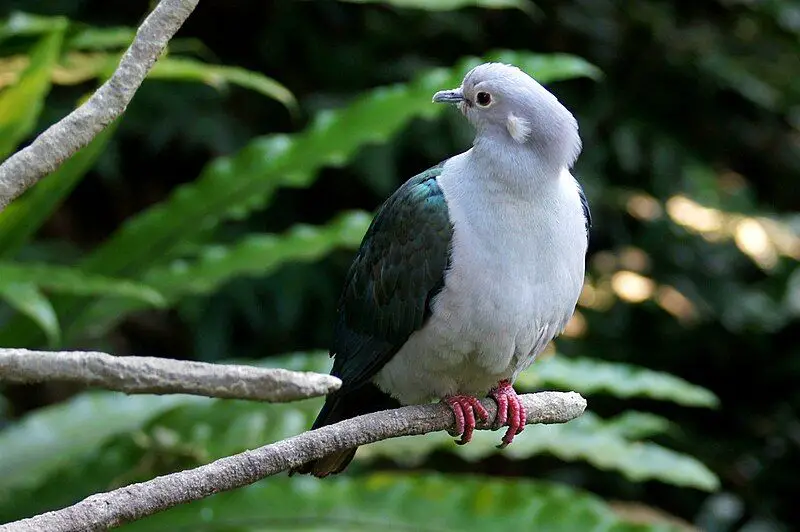Colombo is a vibrant and bustling city, and it is home to a variety of bird species. From the colorful parakeets that dot the city’s parks and gardens to the majestic eagles that soar high above the sky, birds in Colombo are an integral part of the city’s ecosystem.
With its diverse range of habitats, Colombo provides many birdwatching opportunities, and birders worldwide flock to the city to observe its avian inhabitants.
From the wetlands of the Kelani River to the city’s many parks, there is no shortage of birds to observe in Colombo.
9 Birds to Watch in Colombo
Colombo is the capital and largest city of Sri Lanka, and it is a vibrant and cosmopolitan place with a rich cultural heritage. But Colombo is not only a hub of urban life but also a haven for birdwatchers who want to enjoy the diversity and beauty of the city’s avian fauna.
Here are nine of them that you should not miss.
1. Blue-tailed Bee-eater

The blue-tailed bee-eater is a near-passerine bird belonging to the bee-eater family Meropidae. It is a widely distributed species in South and Southeast Asia, and many populations display migratory solid behaviors.
The blue-tailed bee-eater is usually seen in the dry grasslands, open woodlands, or near rivers and streams. It feeds mainly on insects, such as bees, wasps, dragonflies, grasshoppers, and beetles. It is a colorful bird, its body predominantly green and tail light blue.
The blue-tailed bee-eater has a distinctive call, a loud, repeated “keek-keek-keek” that can be heard over a large area. During the breeding season, the blue-tailed bee-eater will form large, noisy colonies consisting of several hundred birds.
The blue-tailed bee-eater is an important species to consider for conservation efforts due to its wide range and dependence on various habitats.
| Kingdom | Animalia |
| Phylum | Chordata |
| Class | Aves |
| Order | Coraciiformes |
| Family | Meropidae |
| Genus | Merops |
| Species | M. philippinus |
2. Black-hooded Oriole
The black-hooded oriole is a species of bird that belongs to the oriole family of passerine birds. This species is a permanent resident of tropical southern Asia, ranging from India and Sri Lanka in the west to Indonesia in the east.
It usually inhabits open woodlands and areas of cultivation, and its nest is generally built in the trees. The nest typically contains two eggs.
The eggs are usually light blue and around 2.5 inches long. The black-hooded oriole is an omnivorous bird and mainly feeds on insects, fruit, and nectar.
Its diet includes a variety of small invertebrates, such as grasshoppers, crickets, and beetles, as well as soft fruits, such as figs, berries, and grapes.
They may also feed on nectar from wildflowers and on the sap of trees. The black-hooded oriole is a medium-sized bird, around seven to eight inches long.
They are primarily black, with a distinctive white patch on the back of the head and a yellowish-orange patch on the breast. The wings and tail are black and have a glossy sheen. The bill is black, and the eyes are yellow.
The feet are grayish-brown. The black-hooded oriole is a social bird often seen in up to twenty bird flocks. They are usually seen flying in small groups or foraging on the ground. They are generally quiet birds and can often be seen perching in the trees or on wires.
They are also active during the day and can be seen foraging for food in the trees and the ground.
| Kingdom | Animalia |
| Phylum | Chordata |
| Class | Aves |
| Order | Passeriformes |
| Family | Oriolidae |
| Genus | Oriolus |
| Species | O. xanthornus |
3. Crimson-fronted Barbet
The Crimson-fronted Barbet, also known as the Sri Lanka Barbet, is a bird species native to Sri Lanka. It is a member of the barbet family and is found in the country’s tropical, moist, lowland forests at elevations of up to 1,300 meters.
It is a colorful bird with a bright red forehead, yellow head and neck, and a bright blue back and wings. Its breast is yellow-orange, while its belly is white. It has a long, curved bill that feeds on fruits, flowers, and insects.
The barbets also make loud, repetitive calls, which are used to mark out their territory. They are typically found in pairs or small groups and are believed to mate for life.
Due to the ongoing destruction of its habitat, the Sri Lanka barbet is listed as “Near Threatened” by the IUCN. Conservation efforts are continuing to help ensure the long-term survival of this unique bird species.
| Kingdom | Animalia |
| Phylum | Chordata |
| Class | Aves |
| Order | Piciformes |
| Family | Megalaimidae |
| Genus | Psilopogon |
| Species | P. rubricapillus |
4. Pied Kingfisher

The pied kingfisher is a water kingfisher found in many parts of Africa and Asia. It was first identified by Carl Linnaeus in 1758 as one of the many species of birds in the world. The pied kingfisher has five different subspecies.
Each subspecies differs in size, color, and range, making the species even more unique. The pied kingfisher can be found in various habitats, including wetlands, lakes, rivers, and coasts. It feeds mainly on fish, crustaceans, and aquatic insects.
It is known for its distinctive flight pattern, where it dives into the water and catches its prey with its sharp beak. The pied kingfisher is an integral part of the ecosystem, helping to keep the aquatic populations in balance.
It is also a famous sight for birdwatchers, with its bright colors and unique behavior making it a fascinating species to observe.
| Kingdom | Animalia |
| Phylum | Chordata |
| Class | Aves |
| Order | Coraciiformes |
| Family | Alcedinidae |
| Genus | Ceryle |
| Species | C. rudis |
5. White-throated Kingfisher
The white-throated kingfisher, also known as the white-breasted kingfisher, is a species of tree kingfisher that can be found over a wide range of Asia, from the Sinai Peninsula in the west to China and Indonesia in the east.
It is considered a resident species of the area, meaning that it does not migrate for long distances but may make short-distance movements to find food or suitable nesting sites.
This kingfisher is easily identified by its bright white throat, which stands out against its otherwise blue and black plumage. Its diet consists mainly of small fish, which it catches by diving from a low perch.
It also feeds on other small creatures like insects, crustaceans, and amphibians. The white-throated kingfisher is an integral part of the ecosystem and helps to keep insect and fish populations in check.
| Kingdom | Animalia |
| Phylum | Chordata |
| Class | Aves |
| Order | Coraciiformes |
| Family | Alcedinidae |
| Genus | Halcyon |
| Species | H. smyrnensis |
6. Common Tailorbird
The common tailorbird is a songbird species found throughout tropical Asia. It is highly recognizable for its unique ability to construct nests out of ” “sewn” ” leaves with spider silk.
Rudyard Kipling has immortalized this fascinating behavior in his classic novel The Jungle Book, where a tailorbird named “Darzee” plays a significant role.
Beyond its literary fame, the common tailorbird is also ubiquitous in urban gardens, where it can be seen flitting between trees and shrubs in search of food.
Its presence in gardens provides a pleasant reminder of the beauty of nature and its intricate relationships with the environment. Its nests offer essential bird shelter, creating a unique sight in the garden.
| Kingdom | Animalia |
| Phylum | Chordata |
| Class | Aves |
| Order | Passeriformes |
| Family | Cisticolidae |
| Genus | Orthotomus |
| Species | O. sutorius |
7. Brown-headed Barbet

The brown-headed barbet is a species of bird that belongs to the barbet family, a group of birds distinguished by their brightly colored plumage and short, stubby bills.
Native to the Indian subcontinent, this barbet species can be found inhabiting the region’s tropical and subtropical moist broadleaf forests.
With its bright brown head, black cap, and yellow throat, the brown-headed barbet is an unmistakable and beautiful bird species.
The brown-headed barbet primarily feeds on fruits, nectar, and insects, and it is well-known for its fantastic ability to break open hard-shelled fruits and nuts.
This species is found from sea level to about 2,100 meters above sea level and has been known to inhabit evergreen and deciduous forests.
The brown-headed barbet is also known to be a vocal bird, with its loud and melodious calls echoing through the forests. Overall, the brown-headed barbet is an impressive bird species native to the Indian subcontinent.
With its bright colors and loud calls, it is a joy to have in the region’s forests, and it continues to bring joy to bird watchers and nature lovers alike.
| Kingdom | Animalia |
| Phylum | Chordata |
| Class | Aves |
| Order | Piciformes |
| Family | Megalaimidae |
| Genus | Psilopogon |
| Species | P. zeylanicus |
8. Pale-billed Flowerpecker
The pale-billed flowerpecker, also known as Tickell’s, is a small bird native to India, Sri Lanka, Bangladesh, and western Myanmar.
It is especially fond of nectar and berries, often found in urban gardens where berry-bearing trees can provide a reliable source of sustenance.
The bird is relatively common, and its presence in these gardens makes it a welcome sight for many birdwatchers and enthusiasts. The pale-billed flowerpecker has a distinctive look, with a pale bill and bright yellow feathers on its head and wings.
It is relatively small, with an average length of around 5 inches. Its diet consists mainly of nectar and berries, which it feeds on by hovering near flowers and trees.
It is especially fond of creeper plants, which provide a rich source of nectar and berries. The pale-billed flowerpecker is also known to form pairs and can be seen in groups of up to 10 individuals.
They are known to be curious and friendly birds and often come near humans for food.
Their presence in gardens is a sign of a healthy ecosystem and can be seen as a sign of a thriving urban environment. Overall, the pale-billed flowerpecker is a welcome sight in urban gardens and other areas of India, Sri Lanka, Bangladesh, and western Myanmar.
Their presence is a sign of a healthy environment, and their friendly nature and inquisitive behavior make them a joy to watch.
| Kingdom | Animalia |
| Phylum | Chordata |
| Class | Aves |
| Order | Passeriformes |
| Family | Dicaeidae |
| Genus | Dicaeum |
| Species | D. erythrorhynchos |
9. Green Imperial Pigeon

The green imperial pigeon is a bird species found in dense forests across a wide range of tropical and subtropical countries. It has an extensive range, from Nepal in the west to the Philippines in the east.
It can be found in India, Sri Lanka, southern China, Indonesia, and other countries. It is a large pigeon, with an adult reaching up to 40 centimeters in length. This species of pigeon is omnivorous, feeding on a variety of fruits, buds, and other plant material.
However, this pigeon is known to eat small invertebrates and other birds’ eggs. It is typically found in pairs or small flocks and is often seen perched on high branches in the canopy of the forest.
The green imperial pigeon is an important species in the forest ecosystem, as it helps to disperse seeds and move pollen from one tree to another. The species is also popular with bird watchers, as its vibrant green plumage and large size make it a striking sight in the forest.
Unfortunately, it is also threatened by habitat loss and hunting, and its population is declining in many areas.
| Kingdom | Animalia |
| Phylum | Chordata |
| Class | Aves |
| Order | Columbiformes |
| Family | Columbidae |
| Genus | Ducula |
| Species | D. aenea |
Conclusion
Colombo is an excellent place for birdwatching, as it is home to a wide variety of different species of birds. From the majestic peacocks to the colorful parrots, Colombo is a birdwatcher’s paradise.
The city’s diverse habitats provide a perfect environment for birds to thrive, and the abundance of food sources makes it an ideal spot for birders to explore.
With its stunning scenery and vibrant wildlife, Colombo is a must-visit destination for bird lovers.